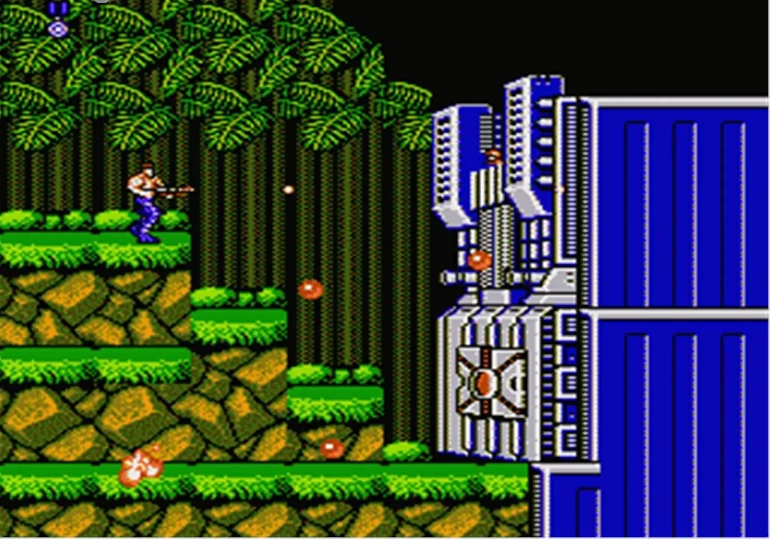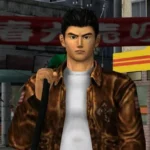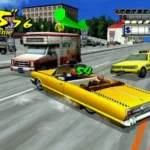6 Games That Will Drive You Crazy...

Even if they drive us crazy. The fun of video games comes from a series of small satisfactions in the form of achievements that let us progress. However, for the gaming experience to be enjoyable, it’s important that the difficulty matches the player’s skill. If it’s too easy, we’ll get incredibly bored, falling into monotony. On the other hand, if the game is too hard, it’ll end up frustrating us.
Today, we’re dedicating our feature to this second kind of game—the ones reserved for the ultra-pros and that drive the rest of us mortals insane. Below is our selection, and we hope the list grows with your comments. We love constructive criticism, so we ask that you keep your contributions polite. Here are a few "impossible" games!
CONTRA / PROBOTECTOR
The Contra saga—or Probotector, as it was called in Europe due to censorship—is one of the franchises I hold dearest when reminiscing about older generations of games. Its run-and-gun style and devilish difficulty made every installment a real challenge. Konami never made it easy.
The original Contra on the NES (and later entries followed the same pattern) mixed side-scrolling levels with sections where the perspective shifted to a distant, pseudo-3D camera view. Arcade machines, NES, Game Boy, Super Nintendo, Mega Drive, PlayStation 2, and even the Wii had their own versions of the game—all with the same common denominator: a kamikaze soldier who wanted to die young and recklessly. Ultra-hard.
In a way, Contra was the father of other successful games that came later. Examples include Gunstar Heroes, a fantastic Mega Drive cartridge (which was also brutal in terms of difficulty), or the beloved Metal Slug by SNK. And if you push me, I’d even include Konami’s Sunset Riders here—though it was a bit more relaxed in difficulty.
The Japanese company also released an arcade cabinet that borrowed directly from Contra’s "3D" perspective—a video game adaptation of the G.I. Joe action figures that were all the rage in the late '80s and early '90s. The machine supported up to four players and made coins disappear in minutes, keeping the aggressive spirit of Konami at the time.
Speaking of Konami… what about Mega Man?
SOL NEGRO (OPERA SOFT, 1988)
If there was ever a time when games were hard—brutally hard, almost sadistically so—it was undoubtedly the 1980s. Spanish games from this era had a special reputation for being punishing—just look at the traumatizing Abu Simbel Profanation or the game we’re discussing here: Sol Negro, a side-scrolling shooter where you alternately control two different protagonists.
Opera Soft delivered a story heavily inspired by the movie Ladyhawke. The duo—the muscular, ape-like Bully and the voluptuous Monica—are cursed to never stay together, transforming into an eagle and a fish alternately with every full moon. The only way to break the curse is through a rare astral phenomenon known as the Black Sun—a total solar eclipse. Bully and Monica must reach a specific location in time to perform the ritual during the eclipse.
On paper, it sounds simple. It’s not. Both Bully and Monica had sluggish controls, relying on a jetpack that could overheat and stop working. Even the slightest touch from the swarming enemies meant instant death, and you could only respawn if you had energy left. And if worrying about your own survival wasn’t enough, you also had to keep your partner from taking damage—enough to make you sweat. To make things worse, after reaching a certain point, the game forced you to backtrack to rescue your partner, facing all the same brutal obstacles again. Pure sadism. In the end, most of us resorted to infinite-life cheats. That’s just how it was.
ABU SIMBEL PROFANATION
Abu Simbel Profanation was a platformer released by the beloved Spanish studio Dinamic in 1985, right when the company began its rise during the Golden Age of Spanish software.
The limited hardware of the '80s (Spectrum, MSX, Amstrad) meant games couldn’t be overly long or expansive. So, developers compensated by cranking up the difficulty. But Víctor Ruiz—the game’s main producer—didn’t realize the difficulty meter was already maxed out. The result? Less of a platformer, more of a pure skill test. Every jump had to be calculated to the millimeter—because even the slightest touch (and I mean slightest) from a trap meant death.
You guided Johnny Jones, the protagonist, through over 40 single-screen levels in search of Abu Simbel’s tomb. His appearance was bizarre—he’d been transformed into a strange creature by a curse. Only by reaching his goal would he regain his human form.
GHOSTS 'N GOBLINS
Ghosts 'n Goblins is a Capcom platformer that debuted in arcades in 1985. It might not ring a bell for some, even though it was later ported to multiple consoles and spawned sequels. But who could forget a game where getting hit leaves you in your underwear?
The story is simple: You play as Sir Arthur, a brave knight who must battle creatures from the underworld to rescue his kidnapped princess. He starts in armor, throwing lances (which upgrade later), but let’s be honest—you won’t get far.
The difficulty is obvious from the first second. You get three lives, but one hit strips your armor, and a second kills you. Each death sends you back to the start (or the halfway point if you reached it). Oh, and the levels are packed with relentless enemies. As a final kick in the teeth, there’s a timer—because the princess won’t wait forever.
This was fine on consoles, but for those of us who played in arcades, seeing the "Insert Coin" message every two minutes wasn’t as fun. If anyone beat this without cheats, contact me—I’ll marry you.
BATTLETOADS
Developed by Rare and released for the NES in 1991, Battletoads was meant to compete with the Teenage Mutant Ninja Turtles—the biggest heroes of the early '90s. Technically impressive for its time, it later got ports to the Sega Mega Drive and Game Boy (the version I played).
Like many games of the era, Battletoads was a side-scrolling beat-'em-up, similar to Double Dragon. What set it apart was its variety of stages and, above all, its brutal difficulty. The infamous hoverbike levels became a hallmark of constant deaths.
The game’s limited lives and continues made it impossible to beat without memorizing every platforming and speed section. To this day, Battletoads is considered one of the hardest games ever—if not the hardest. Anyone who’s played (and beaten) it will agree.
TINTIN IN TIBET
Tintin in Tibet (1996) was released for Game Boy, Game Gear, Mega Drive, Super Nintendo, and PC—with the PC version being the most successful. Its biggest flaw? It could test the patience of the calmest person on Earth.
The game had strengths: a rich variety of settings, minigames, epic moments… but all were overshadowed by its infuriating controls, demanding pixel-perfect precision. Progress often relied on trial-and-error.
Another issue was the time limit. Moving cautiously to avoid cliffs or enemies often meant running out of time, forcing restarts. The enemies were cheap, ambushing you unexpectedly, making memorization more important than reflexes. In short, a "gem" from the old school that today’s players wouldn’t tolerate.


![[Amstrad CPC] Sol Negro - Longplay](https://i.ytimg.com/vi/9nJZjOoHVFM/hqdefault.jpg)

![Arcade Longplay [115] Ghosts´n´Goblins](https://i.ytimg.com/vi/uIhyjrXVhzg/hqdefault.jpg)




Leave a Reply